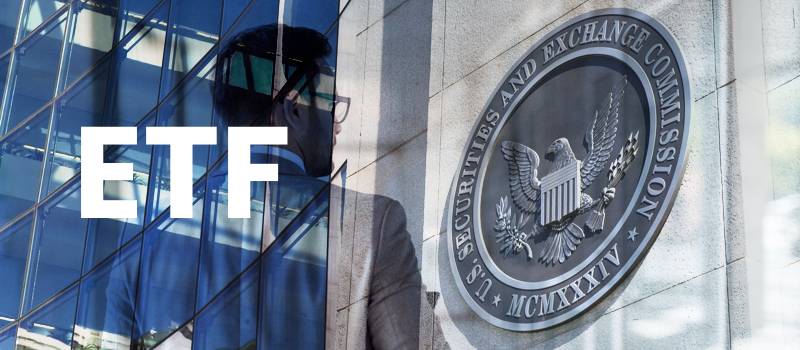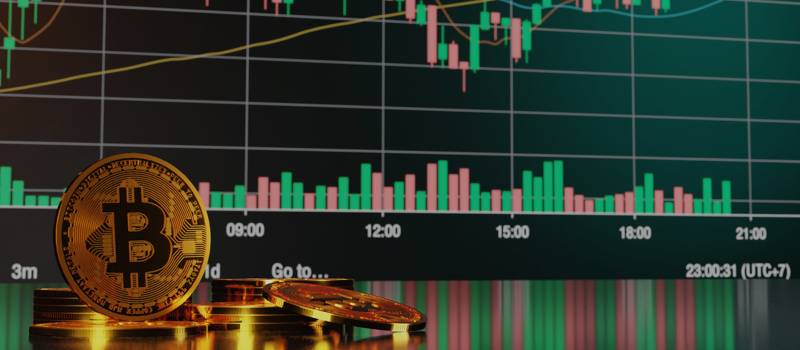Ethereum touched just shy $2.4k early last week, making a two-week high, closing three consecutive daily green candles against Bitcoin, and taking ETHBTC to 0.066782 at the time of writing. Some analysts attribute this strength to the up-and-coming London upgrade wherein the Rinkeby testnet rollout is anticipated. The mainnet launch depends on the success of Rinkeby, and at this time, no firm date for the launch is available and won’t be until Rinkeby’s achievement has been determined. The London hard fork puts the spotlight firmly back on the alts, and some investors believe Ethereum can lead the alt charge against Bitcoin. So then, just what is the Ethereum London hard fork? It concerns two main upgrades which will make changes to the network’s transaction fee model and also to the difficulty time bomb. EIP-1559: Fee market change is the most significant element, including a new deflationary mechanism that will burn the base fee, leading to greater scarcity and adding to the long-term viability of the Ethereum network. Currently, users enter a bid to pay for their gas fees, which incentivizes miners to prioritize transactions based upon the fee added. Under EIP-1559, each block will have a fixed, associated fee instead, making a more predictable and fairer mining mechanism.
Keeping a watch on ETH 2.0, which will bring the change from proof-of-work to proof-of-stake, EIP-3228 will implement a difficult time bomb, and over time, blocks will become increasingly difficult to mine. This will gradually make the process increasingly more unprofitable. It is believed that somewhere near Q2 2022, that mining will become so unprofitable that miners will have no choice but to cease mining on Ethereum 1.0. Under EIP-3554, the London hard fork will delay the start of EIP-3228 and will take effect in December 2021. Could the London hard fork generate greater investor confidence in alts? Ethereum developers Consensys recently reported more than 170,000 validators had staked over 5.4 million ETH on the Beacon Chain. Justin d’Anethan, the Head of Exchange Sales at Eqonex, said this bodes well and demonstrates investor confidence returning to the altcoins. He expects greater inflows into altcoins as a result, and not just into Ethereum. “While BTC is rising and feeling stronger, traders are more interested in alts, which tend to be more volatile but so generate higher returns when things feel well supported and headed higher. So, what we’re seeing is crypto investors gaining confidence and re-entering altcoins, including — but not limited to — ETH.” Up until the recent crypto crash, Bitcoin’s dominance was at a 38-month low. But as the market-wide sell-off ensued, some investors chose to put their capital into Bitcoin, leading to a renewed spike in its dominance. Late June saw Bitcoin’s dominance begin rounding downwards, which lends support to d’Anethan’s comment. Many are now expecting a revival in altcoins if this pattern continues.
The Crypto market doesn’t care about Dogecoin shill Elon Musk’s tweets anymore

Judging by the lack of any meaningful impact on prices his crypto-focused tweets are making these days, apparently Tesla and SpaceX CEO Elon Musk is gradually losing his influence over the cryptocurrency market. Even a few months ago, a single tweet from Musk that mentioned Bitcoin (BTC), Dogecoin (DOGE), or any other cryptocurrency, was enough to boost prices of the corresponding digital assets by a large margin. As an example, DOGE surged by 50% after Elon Musk gave the crypto a bump in February. Musk had boosted the canine-themed coin by 76% with a rocket tweet, and last January, BTC similarly jumped by 18% after Musk added “Bitcoin” to his Twitter bio. However, Tesla CEO’s “crypto credibility” has been rapidly eroding lately, and Musk drew the ire of crypto enthusiasts when he first announced that Tesla would begin accepting BTC for its electric cars in late March—only to retract it a couple of months later over ecological concerns. Musk then appeared on Saturday Night Live and he openly called Dogecoin a “hustle.” The crypto faithful became thoroughly disgusted with the decrease in the prices of both coins which followed, as well as the overall capricious nature of Musk’s tweets. This soon became a “breaking point,” and the community’s sentiment toward Musk began to shift drastically. Bitcoin maximalist Max Keiser even announced a “F*** Elon Tour,” which was slated for later last week in Texas.
With all that, Musk’s recent tweets regarding cryptos have continuously failed to have any meaningful impact on price action. For example, on July 2, he tweeted another meme image, this time depicting a man ignoring attractive women so that he could focus solely on DOGE’s exchange rate. After the tweet, the actual price of Dogecoin was unaffected. Crypto analyst Larry Cermak commented, “The pumps are so weak now. RIP to an easy side income.” Alexandra Clark, sales trader at GlobalBlock, told Business Insider on Friday, “It seems that investors are no longer listening and are finally realizing that the tweets of one man should not be the deciding factor for whether they buy or sell their assets.” These sentiments were also supported by Mati Greenspan, founder of crypto analytics outfit Quantum Economics, who pointed out that Musk’s tweets are “not even visible on the daily chart anymore. Barely noticeable on the 4h.” On Tuesday of last week, Bitcoin was trading at around $34,330, down 3.8% for that day. According to crypto metrics platform CoinGecko, this is nearly a 50% drop since BTC’s high in April. Some might point out that Musk recently did manage to pump a certain coin with his tweet. The obscure Dogecoin knockoff called Baby Doge skyrocketed by 130% on Friday the week prior after Musk tweeted about it, referencing a wildly popular YouTube video titled “Baby Shark Dance.” Yet, most investors staunchly believe that his power over major cryptocurrencies has utterly diminished, and whatever leftover influence he may still have is sufficient only to impact what many users view only as “sh**coins.”
Bitcoin ETF applicants accuse the sec of foul play

Last month, the Securities and Exchange Commission (SEC) said it would seek more public consultation on the matter before making a decision, and once again, delayed yet another Bitcoin ETF application, this time from Cboe Global Markets Inc. Altogether, that makes 13 Bitcoin ETFs currently pending approval, according to Market Insider. Some fund managers say this situation points to a double standard and suggests a decidedly anti-crypto sentiment. Similar to how other ETF’s work, a Bitcoin ETF would follow the price of the digital currency, enabling investors to buy into the ETF without buying or trading Bitcoin itself. It thus allows exposure without having to deal with custody and security problems that come with owning Bitcoin or any of the other cryptocurrencies. This makes investing in Bitcoin suitable for mass-market investors, and once such an investment product existed in the U.S., it would open up capital inflows into the Bitcoin market. Surprisingly, the SEC Commissioner herself, Hester Peirce, recently commented that her agency’s approach to the matter is outdated, suggesting it is bordering on a double standard. She said a Bitcoin ETF should have been approved a long time ago. SEC Chair Gary Gensler has previously expressed concerns over fraud, volatility, and manipulation in the underlying Bitcoin market; and he recently told CNBC that crypto spot markets do not have the same investor protection as stock or derivatives markets.
In the interview, Gensler said, “Investors should be aware, I’m saying this in my own voice, that the underlying Bitcoin cash markets, there’s not the robust oversight that you have in the stock markets or in the derivatives markets….” Proponents of Bitcoin ETFs say issues such as fraud, volatility, and manipulation equally exist in legacy markets, and that hasn’t stopped the SEC from approving ETF products based on those markets. Will Rhind, who is the CEO of GraniteShares, an investment firm which filed for a bitcoin futures ETF in 2017, said the unease surrounding Bitcoin fraud and manipulation is simply a misleading distraction. He pointed out that ETFs exist for penny stocks and oil. “There are many markets that are open to manipulation, but that doesn’t stop them from existing, or people from launching products in them.” Echoing this view is Ryan Louvar, the General Counsel at WisdomTree, which manages several European Bitcoin ETFs, and which had filed for one in the U.S in March. Louvar furthered this stance by mentioning that the even though the SEC continues to delay approval, demand is not subsiding. The end result being that “crypto-curious” individuals in the U.S. are left with only questionable choices. Countering these sentiments is Greg King, the CEO of Osprey Funds, who believed that the SEC is making the right move in cautiously approaching the matter. He raised the point that giving Bitcoin ETF’s the green light could have ramifications elsewhere. [They would] “have to be thinking in the back of their head – how is this going to set a precedent for anything else?” Yet – is that not what government commissions do? Set precedents to allow for their citizens’ use of the newest products, technology, and present-day essentials?
Ethereum exchange flow is falling, what does this mean?

Chinese journalist Colin Wu compiled data last weekend which showed a sharp drop in Ethereum reserves held on exchange wallets, and this trend had continued most of last week. This begs the question what is going on with the second largest cryptocurrency? Let us start by asking a more fundamental question: just what is signaled by dwindling Ethereum exchange reserves? Declining exchange flow is typically to be taken as a bullish sign because it suggests investors are pulling out balances for long-term storage. The figure has reached its lowest point in 2021, at 19.8 million ETH, according to analysis by Wu Blockchain of Ethereum exchange reserves. “The reserves of all exchanges of ETH have continued to decrease and have been reduced to the lowest point in the past year, which is 19.8272 million.” Presently, Ethereum is beginning to show signs of recovery from the recent FUD-driven crash. The price has been moving back above the 200-day moving average, and the RSI is in an upwards trend. However, the situation will remain uncertain until a break above the $2.9k resistance, which would confirm a reversal. Now, with less liquid supply available around the exchanges, a consistent demand dynamic would push the price up. In the same tweet, Wu Blockchain noted a rising balance in the ETH 2.0 deposit contract. This appears to suggest that some of the pulled exchange ETH is finding its way into the staking contract. “At the same time, the effective balance in the ETH2.0 deposit contract continued to grow, reaching 6.11424 million.”
This would further support a bullish scenario based on an additional reduction in supply. Currently, ETH staked in the deposit contract will remain locked until transactions are enabled in Phase 2. Developers Consensys gave a vague rollout date for Phase 2 – sometime in 2021 or 2022. Many investors feel that recent developments in Ethereum are driving investor confidence and talk of a Bitcoin flippening is back on the agenda. Alex Mashinsky, the CEO of Celsius Network, was speaking to Kitco News when he said a flippening has already occurred, at least on his platform in dollar terms. “… the flippening already happened. Ethereum already surpassed Bitcoin in dollar terms as the total holdings of the Celsius community. And I think the broader market will follow it….” In general, however, a flippening, in its truest sense, refers to one project overtaking another in market cap valuation and not the overall dollar balance held by the investors of a particular platform. Nonetheless, Mashinsky pointed out that the Ethereum use case of yield has a wider appeal than Bitcoin’s store of value. Thus, he believes we will see an eventual market cap flippening. “And yield as an application just has a broader user case, right? There’s more people in the world who are vying for yield than people in the world saying, “I’m afraid of my fiat current, I’m just going to park some value.” Based on the current Bitcoin market cap of $636 billion, Ethereum would need to hit $5.4k to take the top spot.
Binance (BNB) boss admits mistakes have been made, looks to shore up compliance team

Changpeng Zhao, the founder and CEO of Binance, posted a letter admitting that his firm hadn’t gotten “everything right.” He attributed this to the speed at which the firm has grown. “Binance has grown very quickly, and we haven’t always got everything exactly right, but we are learning and improving every day,” he wrote. The comments come amidst regulators issuing warnings on Binance; and with recent problems with fiat deposits, bank bans, and accusations of defective derivative products having spooked customers. Binance said it plans to double its compliance team in a bid to stay on the right side of regulators. As previously reported, a total of four financial regulators have sounded the alarm on Binance, and most issued warnings about the firm’s lack of licensing in their respective jurisdictions. Binance was forced to withdraw its services from Ontario due to the case brought against them by the Financial Services Regulatory Authority in that province. Thailand’s Securities and Exchange Commission filed a criminal complaint against them due to operating a crypto exchange without a license, and the issue has been logged with the Thai police. There have now been problems with users on/off ramping. It started with U.K users having trouble with GBP ramping; and presently, reports are circulating that access to Europe’s SEPA payments network has also been suspended.
In an attempt to address these worries, Zhao posted a letter about the current regulatory climate and what lies ahead for his firm; however, it came short of addressing any of the regulators’ concerns. Instead, Zhao spoke of the ways in which Binance has prioritized users and is working to tackle the problem of money laundering and fraud, etc. “Therefore, we have added requirements for using our platform and set industry standards: strict insider trading policies (no active trading of any asset within 30 days), a Secured Asset emergency fund (SAFU) to protect user assets and rigorous listing standards and firewall to separate out the listing team.”
Shifting the focus back onto regulators, he called for clearer regulatory guidance, and welcomed more regulation due to this being a sign of maturation for the crypto industry. He then drew parallels with the invention of the car, saying that during the period of the first usage of automobiles, no traffic lights existed, there were no traffic laws, or even any in-car safety features. However, over time, those things arrived, and this is similar to where the crypto industry stands today. In hoping to satisfy regulator expectations, Binance has strengthened its international compliance team and advisory board, including appointing to them former regulators.
‘Bitscam’ and ‘Cloudscam’ end up scamming 93,000 bitcoin and Ethereum users

Lookout, an integrated endpoint-to-cloud security company, announced late last week the discovery of major crypto mining scams using hundreds of Android apps in a release shared with CryptoSlate. Categorized into two distinct Android app families with the names BitScam and CloudScam, these apps were specifically designed to target people interested in cryptocurrencies. Security researchers at the Lookout Threat Lab identified more than 170 apps altogether that are estimated to have scammed more than 93,000 victims. It is believed that the majority of these apps are side-loaded based on the fact that only 25 were available for download on Google Play. Lookout has been in close contact with Google and the apps on Play have been removed. Both the BitScam and CloudScam apps advertised themselves as providing cloud cryptocurrency mining services for a fee. Lookout researchers analyzed the apps very closely, and they found that no cloud crypto mining actually takes place. Instead, the scammers pocket the money spent on apps and upgrades without ever delivering the promised services. Lookout estimated that the apps stole more than $350,000 from their victims. Ioannis Gasparis, a mobile application security researcher at Lookout, explained, “These apps were able to fly under the radar because they don’t actually do anything malicious. They are simply shells set up to attract users caught up in the cryptocurrency craze and collect money for services that don’t exist. Purchasing goods or services online always requires a certain degree of trust — these scams prove that cryptocurrency is no exception.” Both the BitScam and the CloudScam apps trick people into thinking they are paying for cloud crypto mining services. In addition to the apps themselves costing money, they promote additional services and upgrades wherein users can purchase either by transferring cryptocurrencies to the developers’ wallets or through Google Play. The crypto market has seen its share of scams, frauds, and hacks ever since it gained popularity in the early part of the last decade. This has worked to tarnish the image of cryptocurrencies in mainstream circles.
This crucial Bitcoin metric reached a high. But traders don’t seem to care!

Data from CryptoQuant, a popular on-chain data analysis tool for Bitcoin and other cryptocurrencies, showed that Bitcoin spot exchanges outflow transaction count hit a yearly high. As the network re-adjusted its difficulty, Bitcoin mining saw a sharp rise in its revenue. Analytics service Blockchain.com reported that active miners reaped the rewards after the sharp rise, as the majority of the hash rate went down in the past few weeks as China imposed strict bans on Bitcoin mining in their country. Such Bitcoin outflows from exchanges are often seen as a very bullish sign for the price. The asset continues to range in the $30,000 to $35,000 price band. The price action is showing good strength and bounced off the $33,000 support. However, the $35,000-$36,600 area has been a region of concern in the past and there is a good chance that the price might face rejection in that area and find a lower support level. The Relative Strength Index (RSI) is also showing strength, indicating further upside to the price. It will be vital to break the $36,600 range beforehand. The volume is still a bit on the lower side and a volume influx will confirm a continuation of the price uptrend. The 50MA is currently in the $36,000 region and a flip of the 50MA and the daily resistance will be very bullish for the price.
Ethereum also looks good against the USDT and BTC pair. There is minor resistance in the $2,400-$2,450 region and it is likely that the price might face another rejection there. The Bollinger Bands, a popular indicator to determine the price action using volatility and historical prices, shows resistance in the same area, and this may be indicative of a pull-back towards the 20MA. However, the RSI (Relative strength index), similarly to Bitcoin’s, is showing good strength, indicating positive price action should follow through in the coming days. On the shorter time frame, the $2,300 region is a good area to go long as that happens to be support on the four-hour time frame. All in all, so long as BTC manages to remain stable, ETH should push towards the $2,500 mark.
The post Digital Asset Insights #24 appeared first on JP Fund Services.
Tradersdna is a leading digital and social media platform for traders and investors. Tradersdna offers premiere resources for trading and investing education, digital resources for personal finance, market analysis and free trading guides. More about TradersDNA Features: What Does It Take to Become an Aggressive Trader? | Everything You Need to Know About White Label Trading Software | Advantages of Automated Forex Trading








